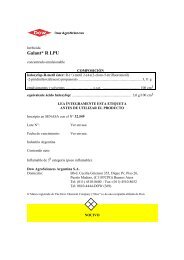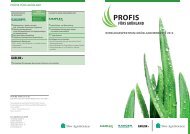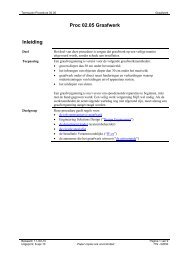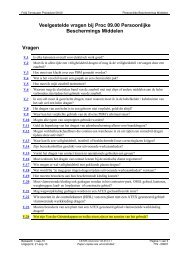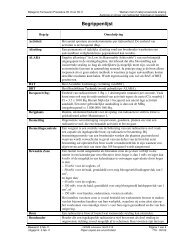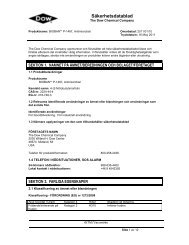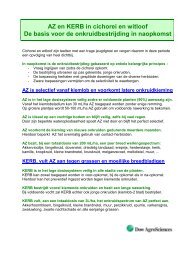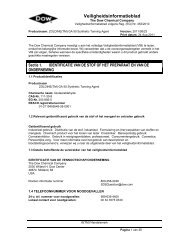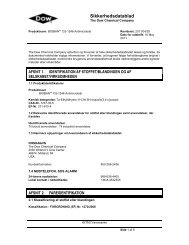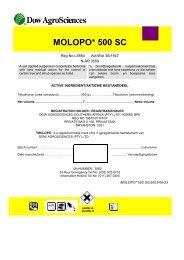TECH SOLUTIONS 214.0 Reduce Wall Condensation Potential with
TECH SOLUTIONS 214.0 Reduce Wall Condensation Potential with
TECH SOLUTIONS 214.0 Reduce Wall Condensation Potential with
Create successful ePaper yourself
Turn your PDF publications into a flip-book with our unique Google optimized e-Paper software.
<strong>TECH</strong> <strong>SOLUTIONS</strong> <strong>214.0</strong><br />
<strong>Reduce</strong> <strong>Wall</strong> <strong>Condensation</strong><br />
<strong>Potential</strong> <strong>with</strong><br />
Insulated Sheathing<br />
Summary<br />
Insulated sheathing provides<br />
exceptional moisture protection<br />
performance in residential walls<br />
versus traditional spun-bonded<br />
polyolefin housewrap <strong>with</strong> oriented<br />
strand board (OSB) sheathing.<br />
Increasing stud cavity temperature<br />
is critical to managing the potential<br />
for condensation <strong>with</strong>in conventional<br />
light framed wall designs.<br />
The high R-value* of exterior wall<br />
insulation increases stud cavity<br />
temperature, creating a distinct<br />
moisture protection advantage<br />
over other non-insulated sheathing<br />
materials, as shown in Figure 1.<br />
The moisture content was<br />
analyzed in two types of wall<br />
assemblies – an assembly using<br />
STYROFOAM SIS Brand<br />
Structural Insulated Sheathing and<br />
one using housewrap and OSB.<br />
Testing was performed in both hot<br />
and cold climate scenarios. Neither<br />
of the wall assemblies experienced<br />
moisture content greater than 20<br />
percent, which is the generally<br />
accepted threshold for potential<br />
mold growing conditions <strong>with</strong><br />
wood-based products. The<br />
analyses contained in this document<br />
demonstrate that insulated<br />
sheathings result in drier stud<br />
cavities than non-insulated<br />
sheathing in both hot and cold<br />
climates.<br />
The Core of Moisture Protection<br />
The substantial energy savings<br />
advantage of continuous insulated<br />
foam sheathing in residential walls<br />
is well known. However, does<br />
insulated sheathing offer greater<br />
moisture protection than housewrap<br />
and OSB What impact does<br />
sheathing have on condensation<br />
potential inside the stud cavity<br />
Further, is the perm of sheathing<br />
materials the most important factor<br />
to consider for condensation<br />
potential inside the wall cavity<br />
Or, does the sheathing’s R-value<br />
play a greater role<br />
Why is it important to ask these<br />
questions Excessive moisture<br />
inside the wall can potentially<br />
lead to mold. Wood or woodbased<br />
products <strong>with</strong> a moisture<br />
content of 20 percent or more are<br />
considered to have favorable<br />
conditions for mold growth. 1 It is<br />
imperative to understand the<br />
impact that sheathing selection<br />
can have on the condensation<br />
potential inside the stud cavity.<br />
The two wall system types<br />
shown in Figure 2 meet waterresistive<br />
barrier (WRB) requirements,<br />
and therefore effectively shed<br />
bulk water. However, not all WRB<br />
systems perform equally in managing<br />
condensation potential and<br />
moisture content inside the wall.<br />
The ability to shed bulk water<br />
should not be confused <strong>with</strong> the<br />
ability to manage condensation<br />
potential and moisture content<br />
inside the wall. Both abilities are<br />
vital to providing comprehensive<br />
moisture management in residential<br />
walls. The following analyses<br />
reveal how insulated sheathings<br />
provide a moisture protection<br />
advantage over housewrap and<br />
OSB sheathing materials.<br />
Figure 1: Insulated sheathing results in higher temperatures in the<br />
stud cavity, which increases moisture evaporation and drying to<br />
the interior.<br />
Insulated Sheathing:<br />
• Warmer stud cavity<br />
• Higher drying potential to the interior<br />
• Lower condensation potential in the<br />
stud cavity<br />
Water Vapor<br />
Housewrap/OSB:<br />
• Colder stud cavity<br />
• Lower drying potential<br />
• Higher condensation potential in the<br />
stud cavity<br />
Water Vapor<br />
<strong>Condensation</strong><br />
®Trademark of The Dow Chemical Company (“Dow”) or an affiliated company of Dow<br />
*R means resistance to heat flow. The higher the R-value, the greater the insulating power.<br />
UNITED STATES . RESIDENTIAL <strong>TECH</strong>NICAL INFORMATION
<strong>TECH</strong> <strong>SOLUTIONS</strong> <strong>214.0</strong><br />
<strong>Reduce</strong> <strong>Wall</strong> <strong>Condensation</strong> <strong>Potential</strong> <strong>with</strong><br />
Insulated Sheathing<br />
Figure 2: STYROFOAM SIS Brand Structural Insulated Sheathing <strong>Wall</strong><br />
Assembly vs. Housewrap/OSB <strong>Wall</strong> Assembly<br />
Methodology<br />
Two residential wall systems<br />
were compared using the WUFI<br />
ORNL 2 (PRO version 3.3) heat and<br />
moisture analysis tool for building<br />
envelope construction. WUFI is<br />
recognized as a highly advanced<br />
method of hygrothermal modeling<br />
by North American organizations<br />
such as ASHRAE (American<br />
Society for Heating, Refrigerating<br />
and Air-Conditioning Engineers)<br />
and BETEC (Building Environment<br />
and Thermal Envelope Council).<br />
WUFI PRO modeling is well<br />
1/2" Gypsum<br />
3-1/2" Fiberglass Batt<br />
1/2" or 1" STYROFOAM<br />
SIS Brand Sheathing<br />
7/16" OSB<br />
Housewrap<br />
4" Brick<br />
1" Air Space<br />
STYROFOAM SIS Brand<br />
Sheathing (laminated fiber layer)<br />
STYROFOAM SIS Brand<br />
Sheathing (foam insulation layer)<br />
OSB Sheathing<br />
Housewrap<br />
documented and has been<br />
validated by many comparisons<br />
between calculated and field<br />
performance data.<br />
The wall systems compared<br />
were identical except for the<br />
sheathing materials. See Figure 2<br />
for a detailed comparison.<br />
One wall system featured<br />
STYROFOAM SIS Brand<br />
Structural Insulated Sheathing.<br />
The other wall system utilized<br />
housewrap <strong>with</strong> OSB sheathing.<br />
Two climate scenarios, cold and<br />
hot, were modeled for each<br />
wall system.<br />
Key inputs for the model were:<br />
• Mean interior relative humidity:<br />
40 percent <strong>with</strong> an amplitude<br />
of 10 percent<br />
• Mean interior temperature:<br />
70°F <strong>with</strong> an amplitude of 1.8<br />
• Two coats of latex paint on<br />
drywall, 3 perms<br />
• No interior vapor retarder<br />
(e.g., polyethylene)<br />
• R-13 fiberglass batts; unfaced<br />
• Housewrap, 58 perms<br />
• OSB,
<strong>TECH</strong> <strong>SOLUTIONS</strong> <strong>214.0</strong><br />
<strong>Reduce</strong> <strong>Wall</strong> <strong>Condensation</strong> <strong>Potential</strong> <strong>with</strong><br />
Insulated Sheathing<br />
Figure 3 compares the moisture<br />
content <strong>with</strong>in the actual sheathing<br />
material of each wall assembly.<br />
For STYROFOAM SIS Brand<br />
Sheathing, the moisture content is<br />
monitored inside the laminated<br />
fiber portion only. For the housewrap/OSB<br />
sheathing, the moisture<br />
content is monitored inside the<br />
OSB portion only. The laminated<br />
fiber and OSB are both woodbased<br />
materials that face the<br />
interior side of the stud cavity in<br />
their respective wall systems. This<br />
location is the most critical portion<br />
of the wall to compare because<br />
condensation is most likely to<br />
occur here, especially during<br />
winter months. The two peaks in<br />
the moisture content data shown<br />
in Figure 3 occurred during winter<br />
months when temperatures are<br />
coldest.<br />
STYROFOAM SIS Brand<br />
Sheathing had exceptional<br />
performance not only in the winter<br />
months, but it exceeded the<br />
moisture protection performance<br />
of housewrap/OSB during the<br />
entire two-year period by a wide<br />
margin. Housewrap/OSB did not<br />
keep the wall components nearly<br />
as dry.<br />
It is evident from Figure 3 that<br />
housewrap/OSB sheathing is<br />
much closer to the 20 percent<br />
threshold for potential mold growing<br />
conditions. Insulated foam<br />
sheathing demonstrates exceptional<br />
performance and is well<br />
under the 20 percent threshold.<br />
Figure 3: STYROFOAM SIS Brand Structural Insulated Sheathing vs.<br />
Housewrap/OSB; % Moisture Content of Sheathing; Chicago<br />
% Moisture content<br />
25<br />
20<br />
15<br />
10<br />
5<br />
0<br />
20% moisture threshold for potential mold growth<br />
peaks occur during winter months<br />
slow drying<br />
fast drying<br />
0 1 2<br />
Time (years)<br />
The wall temperature of the<br />
sheathing’s interior surface<br />
was also monitored during the<br />
two-year period. During the winter<br />
months, the interior surface of 1"<br />
STYROFOAM SIS Brand<br />
Sheathing was as much as 14°F<br />
warmer than the housewrap/OSB<br />
interior surface and the 1/2"<br />
STYROFOAM SIS Brand Sheathing<br />
was as much as 7°F warmer.<br />
1" STYROFOAM SIS<br />
Brand; laminated fiber only<br />
0.5" STYROFOAM SIS<br />
Brand; laminated fiber only<br />
Housewrap/OSB; OSB only<br />
Figure 4: STYROFOAM SIS Brand Structural Insulated Sheathing vs.<br />
Housewrap/OSB; % Moisture Content of Gypsum Board; Chicago<br />
% Moisture content<br />
8<br />
7<br />
6<br />
5<br />
4<br />
3<br />
2<br />
1<br />
0<br />
peaks occur in September<br />
0 1 2<br />
Time (years)<br />
1" STYROFOAM SIS<br />
Brand; gypsum only<br />
0.5" STYROFOAM SIS<br />
Brand; gypsum only<br />
Housewrap/OSB; gypsum<br />
only<br />
The higher wall temperatures<br />
<strong>with</strong>in the wall assemblies<br />
featuring STYROFOAM SIS <br />
Brand Sheathing are principally<br />
due to the high R-value of the<br />
rigid foam layer. Higher stud cavity<br />
temperature is the primary reason<br />
the assemblies using STYROFOAM<br />
SIS Brand Sheathing had considerably<br />
lower moisture content.<br />
®Trademark of The Dow Chemical Company (“Dow”) or an affiliated company of Dow<br />
UNITED STATES . RESIDENTIAL <strong>TECH</strong>NICAL INFORMATION 3
<strong>TECH</strong> <strong>SOLUTIONS</strong> <strong>214.0</strong><br />
<strong>Reduce</strong> <strong>Wall</strong> <strong>Condensation</strong> <strong>Potential</strong> <strong>with</strong><br />
Insulated Sheathing<br />
Not only does insulated foam<br />
sheathing have an obvious energy<br />
savings advantage, it also elevates<br />
the temperature of the stud cavity<br />
in cold weather. Elevating the<br />
temperature inside the wall<br />
decreases condensation potential<br />
and increases drying potential to<br />
the inside of the building.<br />
Another cold climate comparison<br />
monitored moisture content inside<br />
the gypsum board during the<br />
same two-year period (Figure 4).<br />
Again, the wall systems <strong>with</strong><br />
STYROFOAM SIS Brand<br />
Structural Insulated Sheathing<br />
outperformed the wall system<br />
featuring housewrap/OSB. <strong>Wall</strong>s<br />
using STYROFOAM SIS Brand<br />
Sheathing had substantially lower<br />
moisture content in the gypsum<br />
board during the summer months,<br />
which allows wood studs behind<br />
STYROFOAM SIS Brand<br />
Sheathing to “live” in a drier wall<br />
environment, reducing the<br />
potential for mold and rotting.<br />
WUFI Results: Hot Climate<br />
Comparison<br />
From Figures 5 and 6, it is<br />
evident that STYROFOAM SIS <br />
Brand Structural Insulated<br />
Sheathing outperforms housewrap/OSB<br />
sheathing in hot<br />
southern climates, in this case<br />
Houston (ASHRAE Climate Zone<br />
2). Again, the insulated foam<br />
sheathing kept the wall components<br />
drier during the two-year<br />
period.<br />
Figure 5: STYROFOAM SIS Brand Structural Insulated Sheathing vs.<br />
Housewrap/OSB; % Moisture Content of Sheathing; Houston<br />
% Moisture content<br />
% Moisture content<br />
25<br />
20<br />
15<br />
10<br />
5<br />
0<br />
0<br />
20% moisture threshold for potential mold growth<br />
Time (years)<br />
Figure 5 demonstrates that<br />
housewrap/OSB sheathing is<br />
much closer to the 20 percent<br />
threshold for potential mold<br />
growing conditions. So in hot<br />
climates, too, insulated foam<br />
sheathing demonstrates exceptional<br />
performance and is well<br />
under the 20 percent threshold.<br />
1<br />
peaks occur in August<br />
0 1 2<br />
Time (years)<br />
1" STYROFOAM SIS<br />
Brand; laminated fiber only<br />
0.5" STYROFOAM SIS<br />
Brand; laminated fiber only<br />
Housewrap/OSB; OSB only<br />
Figure 6: STYROFOAM SIS Brand Structural Insulated Sheathing vs.<br />
Housewrap/OSB; % Moisture Content of Gypsum Board; Houston<br />
9<br />
8<br />
7<br />
6<br />
5<br />
4<br />
3<br />
2<br />
1<br />
0<br />
2<br />
1" STYROFOAM SIS<br />
Brand; gypsum only<br />
0.5" STYROFOAM SIS<br />
Brand; gypsum only<br />
Housewrap/OSB; gypsum<br />
only<br />
®Trademark of The Dow Chemical Company (“Dow”) or an affiliated company of Dow<br />
UNITED STATES . RESIDENTIAL <strong>TECH</strong>NICAL INFORMATION<br />
4
<strong>TECH</strong> <strong>SOLUTIONS</strong> <strong>214.0</strong><br />
<strong>Reduce</strong> <strong>Wall</strong> <strong>Condensation</strong> <strong>Potential</strong> <strong>with</strong><br />
Insulated Sheathing<br />
Other Insulated Foam Sheathing<br />
Products<br />
These results demonstrate the<br />
effectiveness of STYROFOAM<br />
SIS Brand Structural Insulated<br />
Sheathing. However, similar<br />
results can also be achieved <strong>with</strong><br />
other continuous insulated foam<br />
sheathing products from Dow<br />
Building Solutions, such as:<br />
• STYROFOAM Brand<br />
Residential Sheathing<br />
(extruded polystyrene)<br />
• THERMAX Sheathing<br />
(polyisocyanurate)<br />
• Super TUFF-R Insulation<br />
(polyisocyanurate)<br />
Similar to STYROFOAM SIS <br />
Brand Sheathing, these products<br />
all have low water vapor permeance<br />
of ≤0.3 perm, and can be installed<br />
as a WRB. Typically, insulated<br />
foam sheathings are non-structural,<br />
although STYROFOAM SIS <br />
Brand Sheathing combines the<br />
benefits of continuous insulation,<br />
WRB and structural bracing into<br />
one product. STYROFOAM SIS <br />
Brand Sheathing is the only<br />
insulation product from Dow that<br />
can be used for lateral bracing.<br />
Significance of Perm<br />
Housewrap, at 58 perms, is<br />
generally considered an adequate<br />
way to manage moisture in<br />
residential walls. A common<br />
perception in the residential<br />
building industry is that high-perm<br />
housewrap makes the walls more<br />
“breathable,” leading to better<br />
performance than low-perm<br />
insulated sheathing. Yet the<br />
comparison data presented here<br />
clearly show otherwise.<br />
Why didn’t the high-perm<br />
housewrap perform as well as the<br />
low-perm insulated foam sheathing<br />
in the analyses The housewrap’s<br />
perm was not a significant factor<br />
since the OSB has such a low perm<br />
at
References<br />
1. Southern Pine Council, “Managing<br />
Moisture and Mold” Product<br />
Performance Facts,<br />
www.southernpine.com/pdf/<br />
MOLDsheet0903_907.pdf<br />
2. WUFI is a trademark of the<br />
Fraunhofer Institute for Building<br />
Physics in Holzkirchen, Germany.<br />
WUFI ORNL is jointly developed<br />
<strong>with</strong> the Oak Ridge National<br />
Laboratory in Oak Ridge, Tenn.,<br />
and funded by the U.S. Department<br />
of Energy. WUFI PRO version 3.3<br />
is commercially available heat and<br />
moisture modeling software.<br />
Note: Models do not guarantee<br />
actual field performance.<br />
<strong>TECH</strong> <strong>SOLUTIONS</strong> <strong>214.0</strong><br />
<strong>Reduce</strong> <strong>Wall</strong> <strong>Condensation</strong> <strong>Potential</strong> <strong>with</strong><br />
Insulated Sheathing<br />
For Technical Information: 1-866-583-BLUE (2583) . For Sales Information: 1-800-232-2436<br />
THE DOW CHEMICAL COMPANY . Dow Building Solutions . 200 Larkin . Midland, MI 48674<br />
www.dowbuildingsolutions.com<br />
NOTICE: No freedom from any patent owned by Dow or others is to be inferred. Because use conditions and applicable laws may differ from one location<br />
to another and may change <strong>with</strong> time, Customer is responsible for determining whether products and the information in this document are appropriate for<br />
Customer’s use and for ensuring that Customer’s workplace and disposal practices are in compliance <strong>with</strong> applicable laws and other government enactments.<br />
Dow assumes no obligation or liability for the information in this document. NO EXPRESS WARRANTIES ARE GIVEN EXCEPT FOR ANY APPLICABLE<br />
WRITTEN WARRANTIES SPECIFICALLY PROVIDED BY DOW. ALL IMPLIED WARRANTIES INCLUDING THOSE OF MERCHANTABILITY AND FITNESS FOR A<br />
PARTICULAR PURPOSE ARE EXPRESSLY EXCLUDED.<br />
NOTICE: Changes to the International Residential Code require the installation of a water-resistive barrier (WRB) <strong>with</strong>in most exterior wall assemblies in<br />
residential construction. The following Dow insulated sheathing products qualify as a WRB when installed according to the installation instructions developed<br />
for “installation of foam sheathing as a water-resistive barrier”: STYROFOAM DURAMATE Plus, STYROFOAM Residential Sheathing, STYROFOAM<br />
Tongue and Groove, STYROFOAM SIS, STYROFOAM Square Edge, STYROFOAM Residing Board, STYROFOAM High Performance Underlayment,<br />
THERMAX Sheathing, TUFF-R and Super TUFF-R and therefore do not require the use of a building paper or a housewrap as a WRB. When a WRB is<br />
not needed, these Dow foam sheathings may be installed according to standard installation instructions for foam sheathing from Dow. Be sure products and<br />
installation instructions meet code requirements for your particular location. Note: WEATHERMATE and WEATHERMATE Plus Housewraps have already<br />
qualified as water-resistive alternatives to the prescribed felt (see Evaluation Reports NER-593 and NER-640 for approved alternative).<br />
STYROFOAM Brand Extruded Polystyrene Insulation<br />
CAUTION: This product is combustible. Protect from high heat sources. A protective barrier or thermal barrier may be required as specified in the appropriate<br />
building code. For more information, consult MSDS, call Dow at 1-866-583-BLUE (2583) or contact your local building inspector. In an emergency, call<br />
1-989-636-4400.<br />
Dow Polyisocyanurate Insulation<br />
CAUTION: This product is combustible and shall only be used as specified by the local building code <strong>with</strong> respect to flame spread classification and to the use<br />
of a suitable thermal barrier. For more information, consult MSDS, call Dow at 1-866-583-BLUE (2583) or contact your local building inspector. In an emergency,<br />
call 1-989-636-4400.<br />
WARNING: Rigid foam insulation does not constitute a working walkable surface or qualify as a fall protection product.<br />
Building and/or construction practices unrelated to building materials could greatly affect moisture and the potential for mold formation. No material supplier<br />
including Dow can give assurance that mold will not develop in any specific system.<br />
Published November 2008<br />
Printed in U.S.A.<br />
®Trademark of The Dow Chemical Company (“Dow”) or an affiliated company of Dow<br />
Habitat for Humanity is a registered service mark owned by Habitat for Humanity International<br />
Form No. 179-07513-1108P&M<br />
Mckay198005<br />
UNITED STATES . RESIDENTIAL <strong>TECH</strong>NICAL INFORMATION



